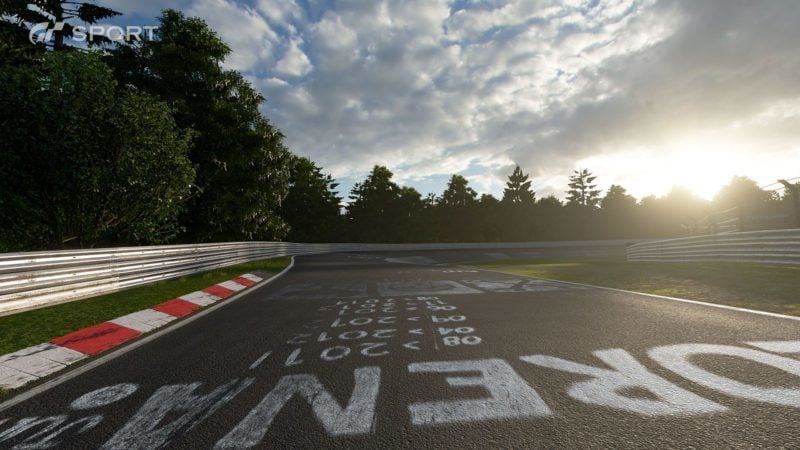Gran Turismo Sport had a fair showing at this year’s E3, delivering fans an all-new trailer and release window of this fall.
While we await more information on the first GT title to touch down on the PS4, the folks over at IGN have put together an interesting video documenting the game’s history.
Gran Turismo
The original Gran Turismo released on the PlayStation in December 1997 in Japan and started it all. Widely regarded as popularizing the sim-racing genre on consoles, the first entry in the series introduced players to a library of over 140 cars and 11 tracks.
Unlike prior racing titles on consoles, Gran Turismo added an element of reality. Every car handled differently, requiring players to be mindful of their driving habits and not mash the throttle through every corner.
As such, Gran Turismo served as the blueprint for the sim-racing genre on consoles moving forward.
Gran Turismo 2
The original game was an unexpected success, spawning a sequel two years later in December 1999. Fundamentally the same game as its predecessor, GT2 brought more to the table: more cars, tracks, and racing events.
With over 600 cars and 20 tracks, GT2 offers one of the most varied rosters in the series to date. Also introducing rally racing to the series, players would have access to the Pikes Peak International Hillclimb. While the circuit hasn’t appeared since, it’s confirmed as a GT-exclusive. The question remains as to when we’ll see it.
Interestingly, the North American cover featured the McLaren F1’s dashboard, a car that wouldn’t be playable in a GT game (in road form) until 2010.
Gran Turismo 3: A-Spec
Released in 2001, Gran Turismo 3 is the first in the series released for the PlayStation 2. Thanks to releasing early in the console’s lifespan, GT3 only featured around 180 cars and 19 tracks. While the numbers certainly weren’t as impressive as those for GT2, the graphical fidelity (and physics) made up for it.
Surprisingly, the third entry featured several unlicensed Formula One cars players were able to obtain from race victories. In addition it also marked the (un)official appearances of Lamborghini and Porsche. The former debuted in Gran Turismo 5, and the latter is making its series debut in GT Sport later this year.

Gran Turismo 4
The fourth installment in the series, released in 2004, was the final game to support the PlayStation 2. Switching things up, GT4 introduced A and B-Spec game modes allowing players to progress as normal or allowing the AI to take the virtual wheel.
GT4 also introduced Driving Missions, a series of events requiring players to achieve a certain objective. Another notable inclusion was Photo Mode, allowing players to take virtual pictures of their cars; a feature seen in every GT game and several competing titles since.
Continuing to play the numbers game, Gran Turismo 4 upped the car count to over 700 cars and 51 tracks. Unfortunately this marks the final time players would see a number of favorite tracks, one among them being Seattle Circuit.
Gran Turismo 5
The first full-featured Gran Turismo title for the PlayStation 3 released in 2010. GT5 was the first in the series to feature visual damage modeling, online multiplayer, and dynamic time and weather.
With the likes of Lamborghini and Ferrari making their series debuts, Gran Tursimo 5 hosted well over 1,000 cars and 71 tracks to race on. One of the most controversial aspects of the fifth installment was its use of “Standard” and “Premium” car models. Standard models borrowed from the previous PS2 title, while the Premium models showcased what the PS3 was capable of.
GT5 introduced post-release content the likes of which included Spa-Francorchamps, Route X, Twin Ring Motegi and several cars.
Gran Turismo 6
The sixth installment in the series released in December 2013 for the PlayStation 3. Building on the previous game, GT6 features over 1,200 cars and 70 tracks and various improvements to customization options.
One notable feature is the Vision Gran Turismo project allowing automakers to develop no-holds-barred concept cars for use in the game. While the release schedule was inconsistent, the program will continue for the upcoming GT Sport.

Gran Turismo Sport
Expected to release later this year, the upcoming seventh entry takes the series in a different direction: esports. First revealed in playable form at a dedicated event in London, GT Sport is a re-imagining of the series.
Veterans need not worry as the traditional gameplay elements remain, but the series is taking an interesting turn. Kazunori Yamauchi remarks that the first six games are the first generation, whereas GT Sport marks the beginning of the second.
With over 170 cars and 19 tracks, the upcoming title takes a more measured approach with a new classing system. The Vision GT project carries over from Gran Turismo 6. Interestingly, Kazunori notes the project still has plenty to offer, meaning there’s the possibility for a Porsche VGT car, now that the company is part of the franchise.
There’s still plenty to learn before its release later this year. On the topic of its release, we’re willing to bet the mumbling of November isn’t far off.
We recently had our own blast from the past, where the GTPlanet staff ranked the six mainline Gran Turismo games. You can check out the list here.
See more articles on Polyphony Digital.











